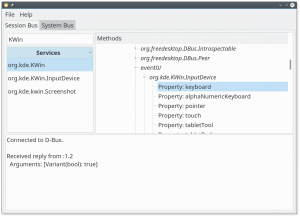Originally posted by oiaohm
View Post
The two texts are apparently both very old, the first one talks about starting Weston from a command line terminal, and things like that. So unrelated to today's common situation. The second text is from 2014 and has remarks that would appear to only support the possibility of what I am talking about, regarding libinput and such.
However I am not interested in actually writing the code for you, and figuring out where exactly that code would best reside. I just know from my own tests that the Linux kernel provides everything needed, and it would be up to the infrastructure above to determine the best plumbing. It is not in the specification of some existing process? Who cares, of course not, that feature doesn't exist yet, above the kernel. My point is, the kernel would support it, and it can be done.
Originally posted by oiaohm
View Post
Actually I'm getting the impression that you seem completely uninterested in the possibility of a solution to reduce the latency of the game itself. "Too much work"? Right...
Originally posted by oiaohm
View Post




Comment